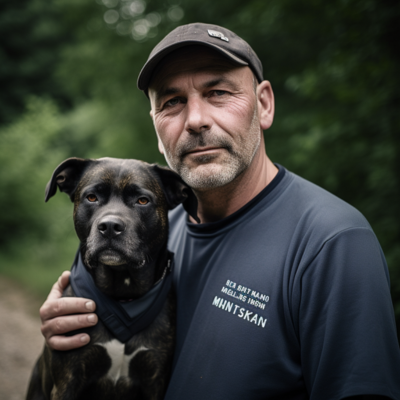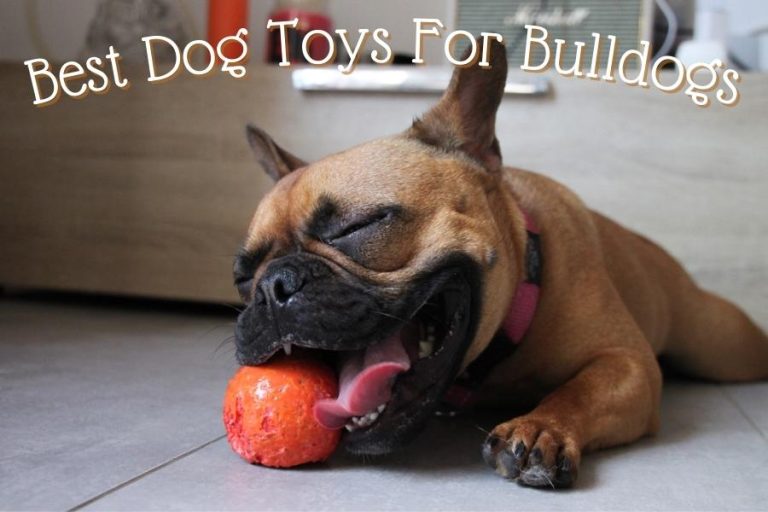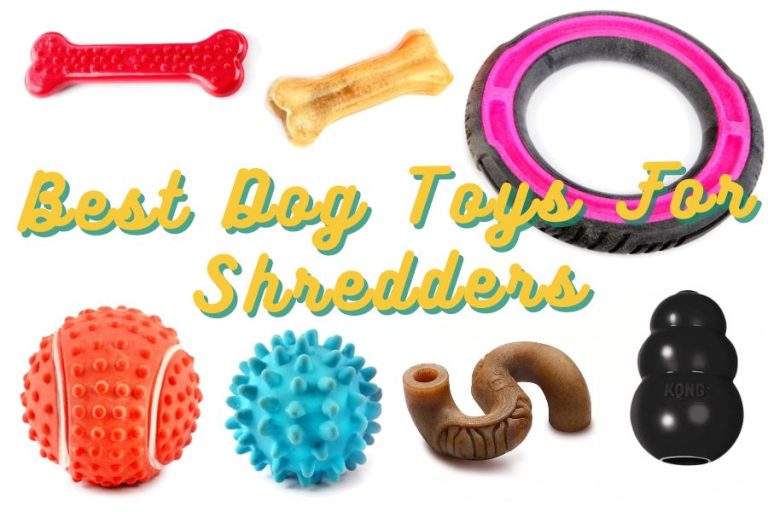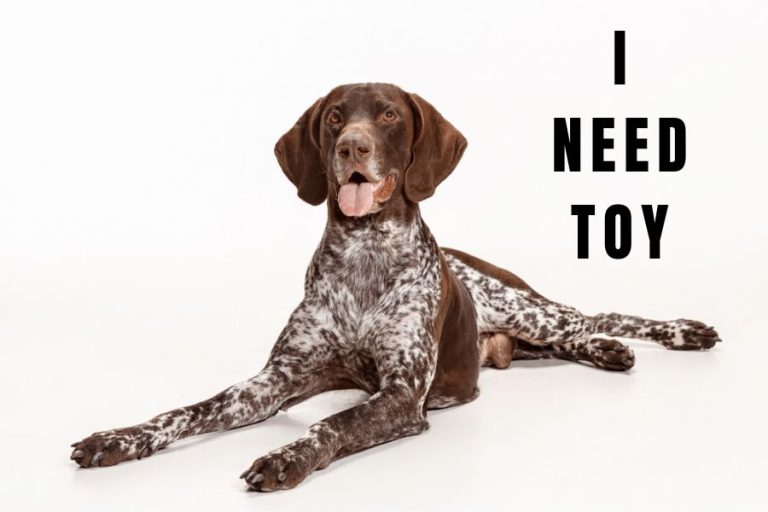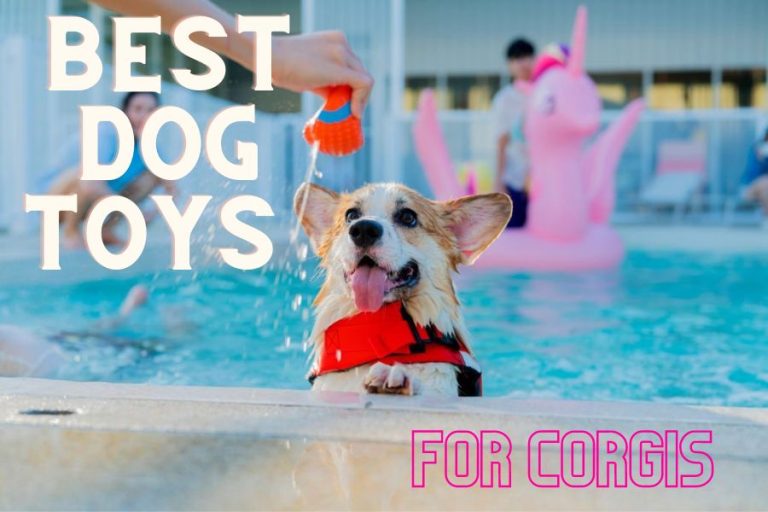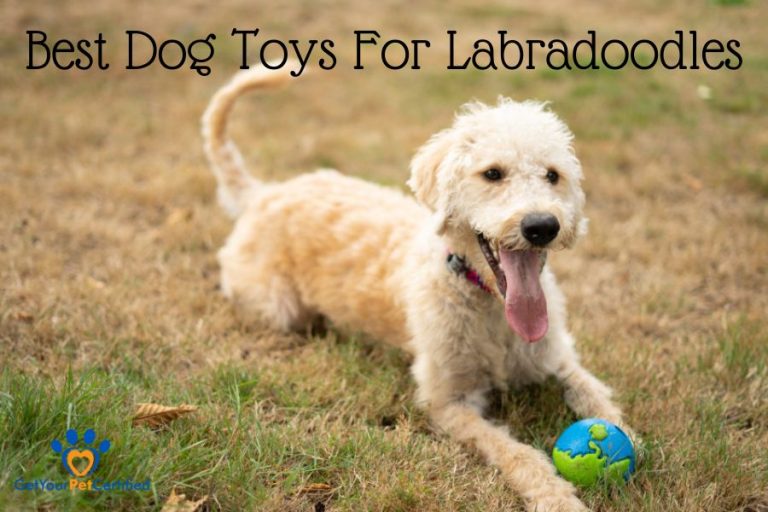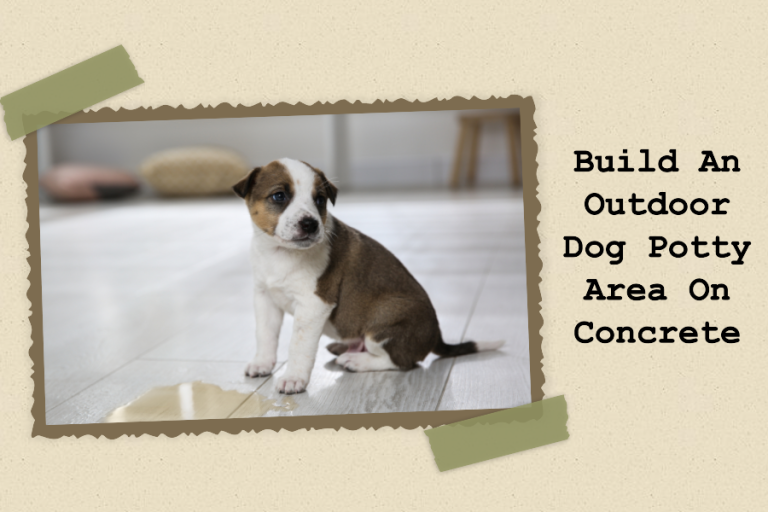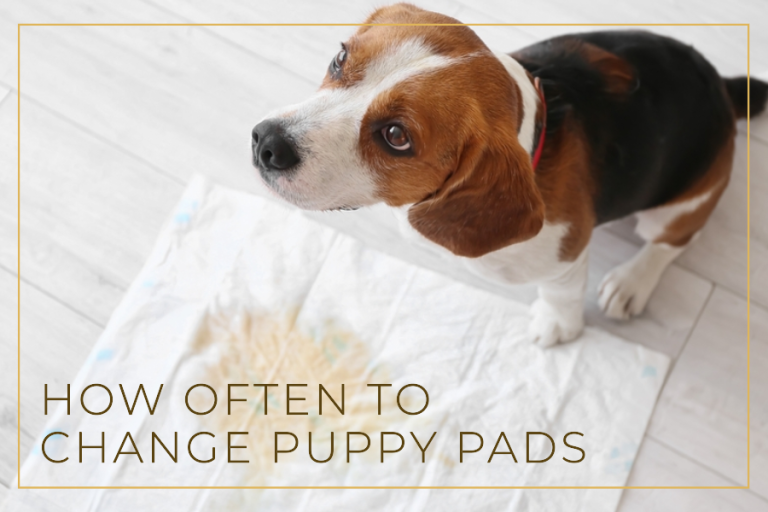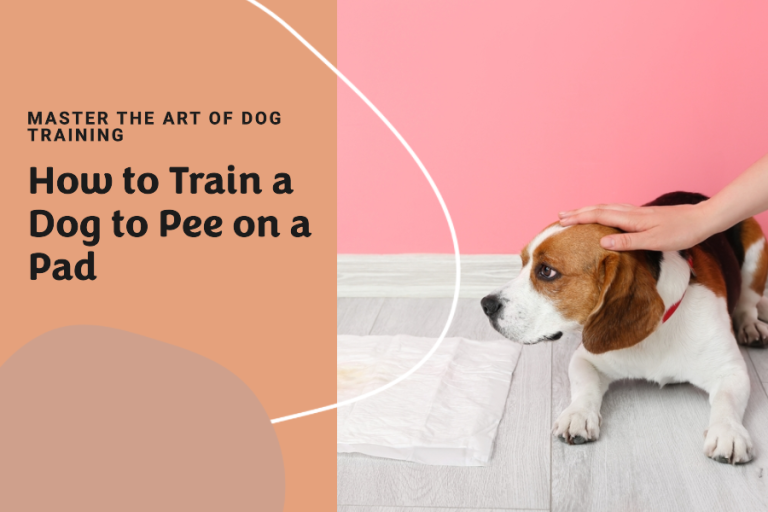Why Does My Dog Lick and Nibble Me Obsessively? Uncovering Reasons Behind Dog Behaviors
The scene is common to anybody who has ever owned a dog: you’re relaxing on the couch when your pet casually runs over to give you a playful nibble or lick. It’s cute, it’s endearing, but then it becomes relentless, leaving you wondering, “Why does my dog lick and nibble me obsessively?“
Does your dog lick and nibble you a lot? Let’s unlock this canine language together. It’s all about their feelings and needs. Plus, it’s how they show love and build a bond with you. So, join us as we dive into the ins and outs of doggie licks and nibbles. By understanding these, you and your furry friend can enjoy a happier, healthier bond.
Is It All About Affection?
Licking is one of the cutest things dogs do and is often mistaken for “doggy kisses.”
Many dog owners interpret their dog’s licking of their face or hands as an expression of love and devotion, much like a human would with a kiss. In the wild, however, licking is a usual way for dogs (particularly puppies) to communicate with their mums for food or submission.
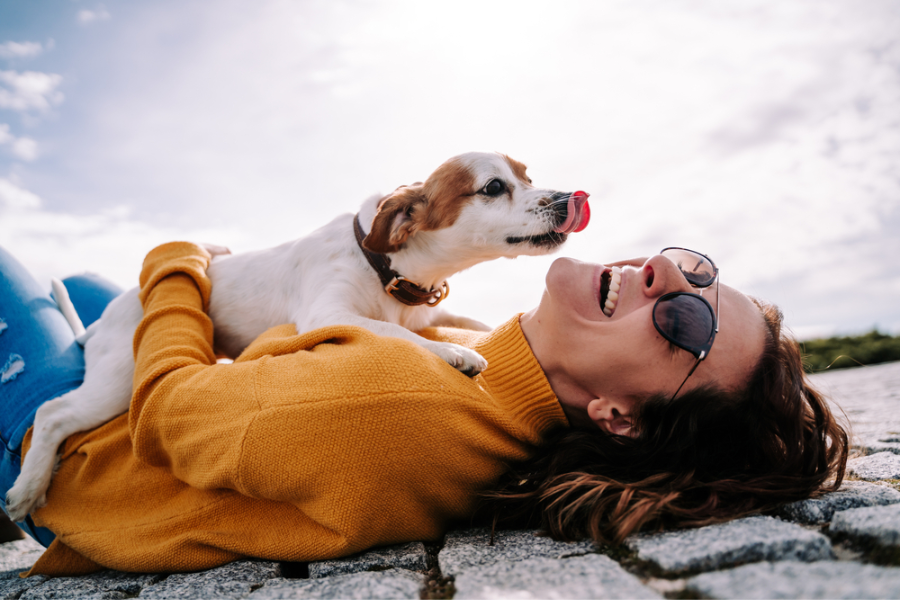
Science, and in particular the hormone oxytocin, can help us grasp the complexity of the link shared by dogs and people. One study published in “Science” discovered that both dog and owner oxytocin levels rise when they look deeply into one other’s eyes.
In addition, the human response to a dog lick is more significant than the licking itself. Petting and verbal praise are typical responses from owners.
In conclusion, there are likely a number of factors at play when a dog licks its person.
Why Does My Dog Lick and Nibble Me Obsessively?
As animal lovers, we’re constantly looking to learn more about our pets, especially when it comes to the peculiarities in their personalities.
Have you ever seen your furry friend chewing away at their paws or giving you a gentle nibble? This behavior can seem excessive at times, but there’s usually a reason behind it. Find out why these actions are being taken.
How Dogs Communicate with Humans?
Dogs have a variety of ways to express their needs and feelings towards their human companions. They might wag their tails, bark, whine, or even lick and nibble. It’s important for us to understand these signals in order to effectively communicate with our dogs and meet their needs.
Taste and Curiosity
Some dogs enjoy the natural salts and oils on human skin. In addition, dogs are very perceptive creatures whose primary senses are their nose and mouth. They may lick and nibble at you as a means of exploring your surroundings. However, it’s crucial to ensure this behavior doesn’t escalate into harder biting.
Signs of Affection
The act of licking releases feel-good endorphins in dogs, making it comforting. Many dog owners interpret this as “doggy kisses,” viewing it as a sign of love and bonding. This is similar to how humans show affection through hugging or holding hands. Gentle nibbling can be a playful gesture, a way for your dog to engage with you.
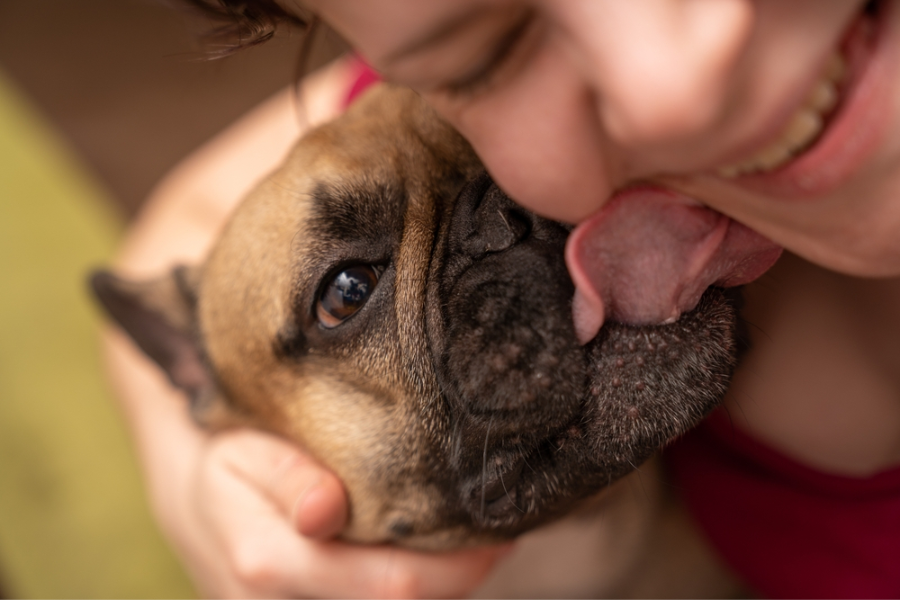
Anxiety and Self-soothing:
In some cases, licking can be a self-soothing behavior, especially those with anxiety issues. Sometimes, when dogs feel nervous or stressed, they might start licking as a way to calm down. It’s one of their self-soothing techniques, especially for pups dealing with anxietyIt might be a sign of pain, itching, or discomfort.
What Does Dog Behavior Science Say?
But what about nibbling? Why do dogs nibble on their owners? The reasons can be both emotional and physical.
From a physiological perspective, licking can cause the body to produce endorphins, which are substances responsible for the sensations of pleasure and comfort. This may help to explain why certain dogs lick themselves “obsessively” as a coping mechanism, especially in times of high anxiety.
Nibbling can also be a part of a dog’s grooming habits. Dogs often nibble on their own fur to clean it or to remove parasites. If your dog is nibbling on you, it might be trying to groom you as a way of showing affection. This nibbling is typically gentle and should not cause pain. Providing them with the best dog toys for nibblers can help satisfy their urge to chew and protect your furniture at the same time.
On the emotional side, dogs might nibble out of love, stress, or a desire for attention. A 2018 article in the journal “Behavioural Processes” suggested that canine-human eye contact increases levels of the feel-good hormone oxytocin.
Therefore, interpreting your dog’s licking and nibbling behaviors can provide valuable insights into its emotional state and physical well-being. By understanding these behaviors, we can strengthen our bond with our dogs and ensure their happiness and health.
Are Certain Situations Triggering My Dog?
Environment and experiences have a significant impact on dogs which leading to behaviors like increased licking and nibbling.
Separation Anxiety
Many dogs struggle when separated from their owners, even for short durations. Upon the owner’s return, they might engage in obsessive licking and nibbling as a way of reestablishing their bond and expressing relief.
Loud Noises and Events
Dogs may become stressed out by loud noises and events like thunderstorms, fireworks, or huge parties. The loud noises and flurry of activity can spike their anxiety levels. Licking, in these instances, can serve as a distraction and a way to calm themselves.
Change in Environment
Moving to a new house, or any other drastic change in their living situation, can be quite upsetting. The unfamiliar surroundings lack the comforting scents and landmarks they’re used to, which can lead to anxiety. In response, a dog might resort to behaviors like licking and nibbling as a way of self-soothing.
Why Does My Dog Nibble Me With His Front Teeth?
One question we often hear is, “Why does my dog nibble me with his front teeth?” This behavior is not uncommon and it’s vital to understand its underlying causes to maintain a healthy relationship with your pet.
Exploring the reasons behind front-teeth nibbling
Nibbling with the front teeth, commonly called “flea biting,” is an important part of a dog’s grooming routine. Dogs groom themselves by nibbling at their skin or hair with their front teeth to get rid of parasites, dirt, and dead skin.
It’s a sign of trust and comfort when they show it to you, too. They are training you to become one of the pack. With this knowledge, we can see that their actions are not hostile but rather in line with their instincts.
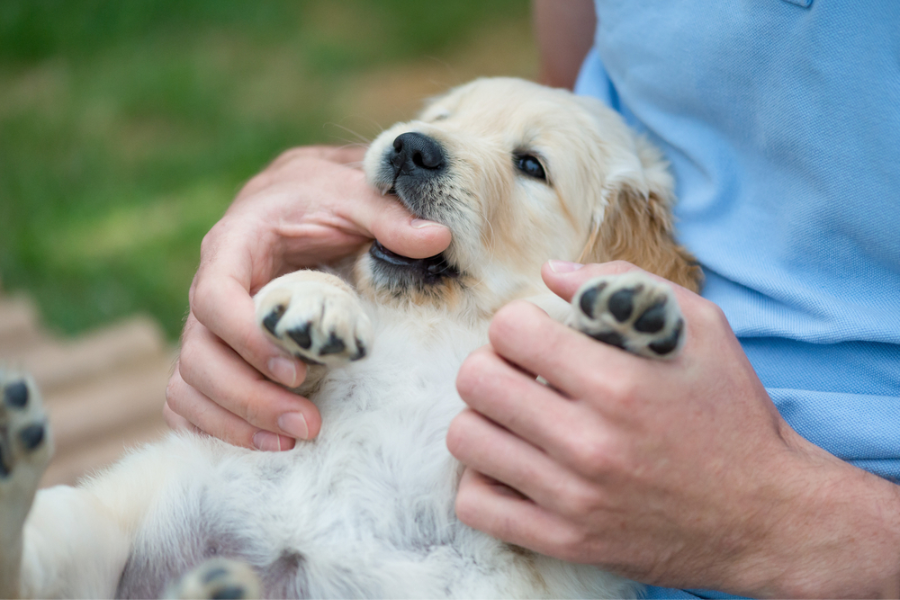
The role of front-teeth nibbling in dog-human interaction
Using your front teeth to nibble on your pet is another way to strengthen your relationship with them. It’s a method for dogs to show their owners how much they care and grow closer to them. A dog’s nip is a sign of trust and affection, and it means your pet thinks of you as part of the family. You may gently discourage nibbling by diverting your pet’s interest to a toy or treat if it becomes bothersome or excessive.
The Significance of Gentle Bites
It’s crucial to differentiate between nibbling and biting. Nibbling involves gentle, playful gnaws using the front teeth, while biting typically involves a more forceful action with the intention to cause harm or express dominance.
Dogs might gently bite their owners out of playfulness, affection, or even to get your attention. It’s their unique way of communicating their emotions and needs to us. However, always ensure that these behaviors don’t escalate into aggressive biting, which can be harmful.
Understanding these behaviors is key in building a deeper bond with your pet. In our next section, we’ll delve into why dogs sometimes bite when petted and how to handle such situations.
Why Does My Dog Bite Me When I Pet ?
Have you ever been in a situation where your dog starts biting you when you pet him? This can be a confusing and worrying behavior, but understanding the reasons behind it can help us address it effectively.
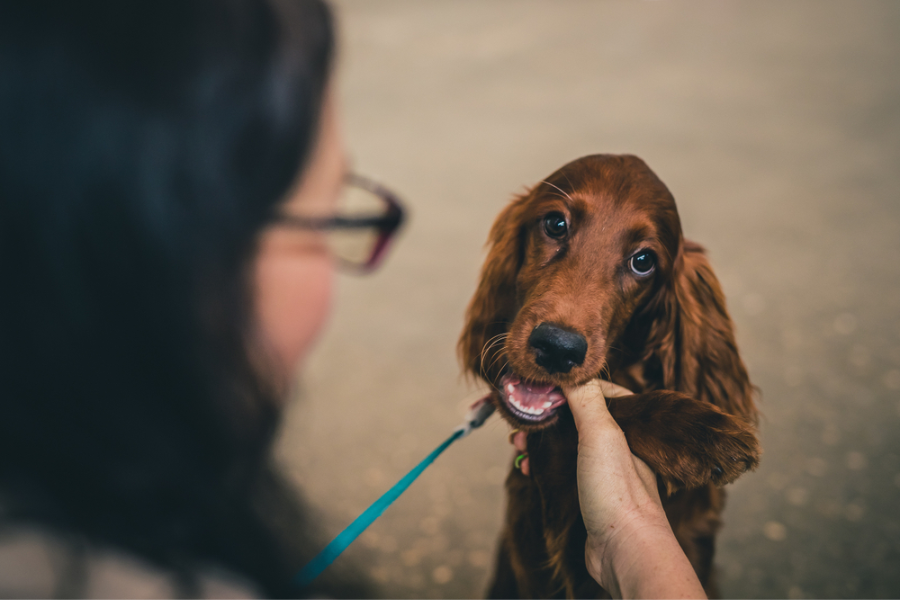
Understanding the reasons behind biting during petting
There are several triggers that could cause your dog to bite when being petted. Discomfort is a common one. Always remember that dogs have their sensitive areas. If we accidentally touch a spot that causes discomfort, they might respond with a bite.
Overstimulation is another possible trigger. Dogs can get overwhelmed if the petting is too intense or prolonged. In these cases, biting is a way for them to communicate that they need a break. There could be other reasons as well, such as fear or a medical issue causing pain.
It’s important to understand your dog’s body language to avoid any miscommunication that might lead to an unexpected bite.
How to respond when your dog bites during petting?
If your dog bites you during petting, it’s important to react appropriately.
Firstly, stop the petting immediately and do not panic. This helps your dog understand that biting leads to an end of the activity they enjoy.
Secondly, avoid punishing or scolding your dog. Yelling, hitting, or reacting aggressively can escalate the situation and turn into a nightmare.
Thirdly, redirect their attention by basic commands like “sit” or “stay”.If commands is not working good, you can offer a toys ro divert them from biting.
Lastly, Create a “Time-Out” area, the situation continues to be out of control, place them in a quiet, safe space to calm down. This isn’t punishment, but a way for them to reset.
Instead, we recommend using positive reinforcement techniques. For instance, reward your dog when they behave well during petting. In addition, try to identify and avoid touching areas where your dog seems uncomfortable.
Remember, understanding and patience are key to building a healthy relationship with your dog. If you’re ever unsure, don’t hesitate to seek professional help.
How Dogs Control Their Bites?
We love our furry friends, but sometimes, they can be a bit confusing. One thing that can puzzle us is how dogs control their bites. Here’s a step-by-step guide on teaching your dog to control their bites, nibbles, and excessive licking.
Learning to Control Bites
Just like kids learn to be gentle, puppies learn to control their bites too. This is called bite inhibition. Teaching your pup to be gentle is a crucial part of their training. E-collar training can be an effective method to help your dog understand the limits of play-biting and to control their strength. It’s a really important lesson for them, so they don’t hurt other dogs or people later on.
Start Early: When playing with your puppy, let out a high-pitched yelp if they bite too hard and then pause the play. This interaction teaches them about bite strength through natural feedback.
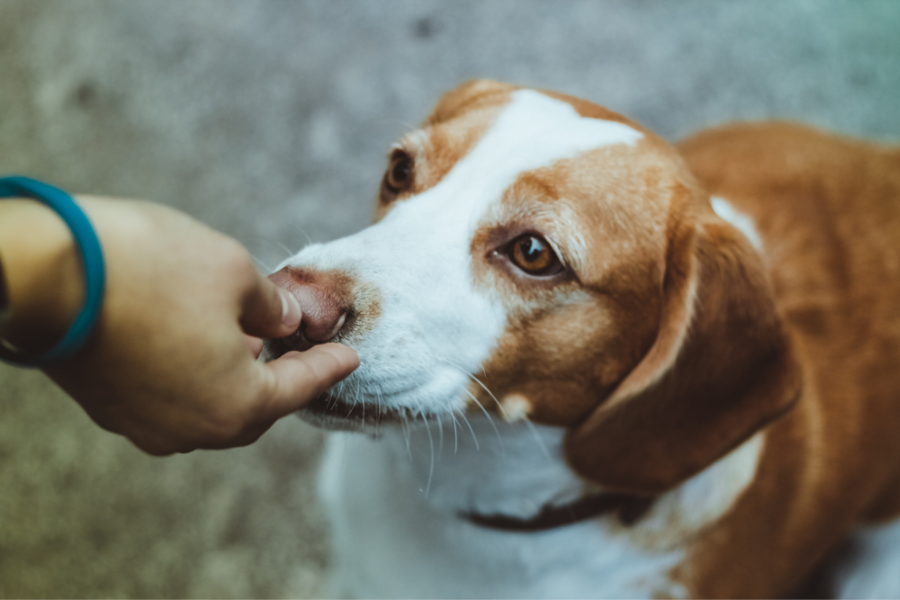
Use Toys: Provide suitable chew toys at all times. Redirect your dog’s attention to the toy if it begins to nibble or bite. It satisfies their urge to chew while protecting human hands and arms.
Reinforce Positive Behavior: Whenever your dog interacts without biting or nibbling, reward them. Positive reinforcement strengthens desired behaviors. When the dog tries to get it and you say “leave it,” wait until they pull away, then reward them with a different treat.
Dealing with Too Much Licking and Nibbling
While licking and nibbling can be normal, sometimes, dogs can do it too much. If your dog is licking or nibbling a lot, to the point where it’s causing sores or hair loss, it’s time to do something about it.
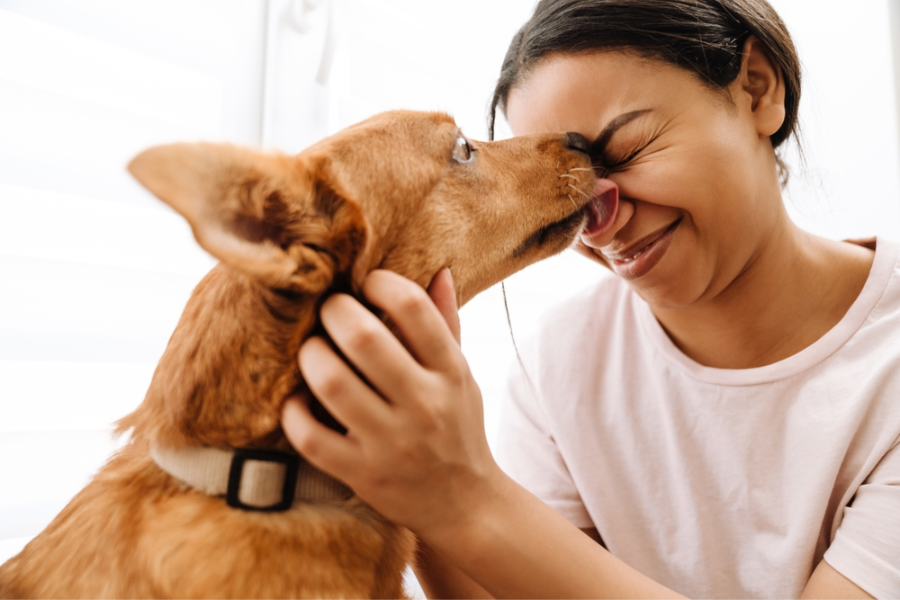
There are a few things you can do to help. You can distract your dog with a toy or a game. You can also reward your dog when they stop the behavior. This is called positive reinforcement. But, if these tricks don’t work, it might be time to Increase physical activity. An exhausted dog is a calm dog. Make sure your dog receives enough of exercise for the pent-up energy it could otherwise release by biting and nipping.
Remember, understanding and managing these behaviors is really important for your dog’s physical and mental health.
| Activity | Duration | Notes |
|---|---|---|
| Introduction to Bite Inhibition | 20 minutes | Start with a gentle play session. Allow the dog to mouth lightly and withdraw hand if too forceful. |
| Training “Leave it” Command | 15 minutes | Use treats to reinforce the command. Gradually introduce scenarios where they’re tempted to bite. |
| Redirection to Toys | 20 minutes | Engage in play and introduce chew toys when they start to nibble. |
| Physical Activity Session | 30 minutes | A walk or play session to burn off energy. |
| Introduction to “Enough” Command | 15 minutes | Similar to “Leave it”, but used during play sessions. |
| Interactive Toys and Puzzles | Varies | Introduce a new puzzle toy. Monitor their interest and engagement. |
| Review and Reinforcement | 30 minutes | Revisit the week’s lessons. Reward good behavior and practice commands. |
Conclusion
We’ve learned a lot about why dogs lick and nibble. These actions tell a story, sharing how our dogs feel. Dogs lick and nibble for many reasons. They might be feeling love, stress, or an itch. If your dog nibbles with his front teeth, it means he trusts you and feels comfy around you.
Sometimes, dogs may bite when we pet them. They might be feeling uncomfortable or too excited. It’s key for us to know if the bite is playful or aggressive. This can help us respond in the best way. Knowing why dogs lick and nibble helps us get along with our pets. With patience and positive rewards, we can guide their behavior.
To wrap up, understanding our dogs is a journey. Let’s keep learning and loving our furry family members. They’re more than just pets; they’re part of our family.

